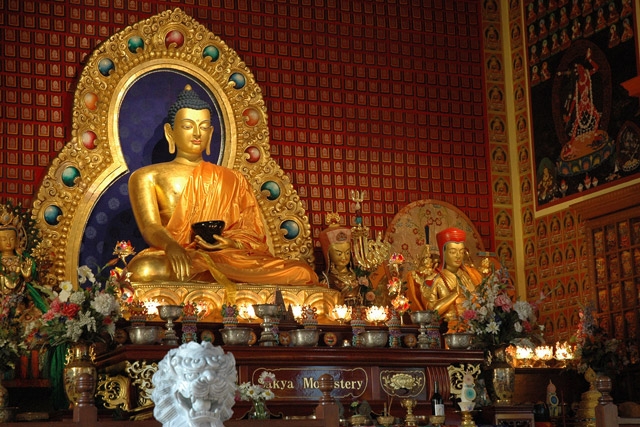Muhammad, the founder of Islam was born in Mecca (in modern day Saudi Arabia) in A.D. 570. At that time, the religious setting of the Arabian Peninsula was "a rather primitive polydemonism and worship of stones, stars, caves and trees.1 Around A.D. 610 he came to believe he was receiving visions, which he claimed were from the angel Gabriel. The Islamic scriptures, known as the "Koran," are the "reciting" of the revelations he claimed to have received for the next 22 years.
Muhammad's preaching of these visions in Mecca met with considerable resistance. The reason for this was because Muhammad's message threatened not only popular polytheism, but the political and economic powers. As a result, Muhammad found his first followers among the lower class and those who were ripe for a new social order.
In 622 he traveled to Yathrib, which is now called Medina. This event, called the "Hejira," is viewed as the turning point of Islam. From then on, Islam was no longer just a religion but a distinct political power. In Medina, the community of believers became a state with Muhammad as its religious and political leader.2
In 630, Muhammad and his followers took over Mecca without resistance. Muhammad declared the Kaaba (the temple in Mecca) was the holiest shrine in Islam. To this day, Muslims direct their prayers facing the city of Mecca and the shrine of Kaaba.3
By the time Muhammad died in 632, Islam had already reached large portions of Asia, Africa and part of Europe. Today, Islam claims over 450 million followers.4 According to Carmody and Carmody, "Islam is the world's fastest growing religion today. It is a great force in Africa, a middling presence in China and the Soviet Union, a shareholder in the petropolitics of the Middle East, a huge presence in Indonesia, and the religion of more than 6 million North Americans."5

Buddhism, founded in the late 6th century B.C.E. by Siddhartha Gautama (the "Buddha"), is an important religion in most of the countries of Asia. Buddhism has assumed many different forms, but in each case there has been an attempt to draw from the life experiences of the Buddha, his teachings, and the "spirit" or "essence" of histeachings (called dhamma or dharma) as models for the religious life. However, not until the writing of the Buddha Charita (life of the Buddha) by Ashvaghosa in the 1st or 2nd century C.E. do we have acomprehensive account of his life. The Buddha was born (ca. 563 B.C.E.) in a place called Lumbini near the Himalayan foothills, and he began teaching around Benares (at Sarnath). His erain general was one of spiritual, intellectual, and social ferment. This was the age when the Hindu ideal of renunciation of family and socia llife by holy persons seeking Truth first became widespread, and when the Upanishads were written. Both can be seen as moves away from the centrality of the Vedic fire sacrifice.
Siddhartha Gautama was the warrior son of a king and queen. According to legend, at his birth a soothsayer predicted that he might become a renouncer (withdrawing from the temporal life). To prevent this, his father provided him with many luxuries and pleasures. But, as a young man, he once went on a series of four chariot rides where he first saw the more severe forms of human suffering: old age, illness, and death (a corpse), as well as an ascetic renouncer. The contrast between his life and this human suffering made him realize that all the pleasures on earth where in fact transitory, and could only mask human suffering. Leaving his wife—and new son ("Rahula"—fetter) he took on several teachers and tried severe renunciation in the forest until the point of near-starvation. Finally, realizing that this too was only adding more suffering, he ate food and sat down beneath a tree to meditate. By morning (or some say six months later!) he had attained Nirvana (Enlightenment), which provided both the true answers to the causes of suffering and permanent release from it.







Wow what a nice teaching
ReplyDeleteGood
ReplyDeleteNice publication
ReplyDelete